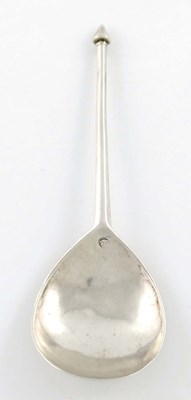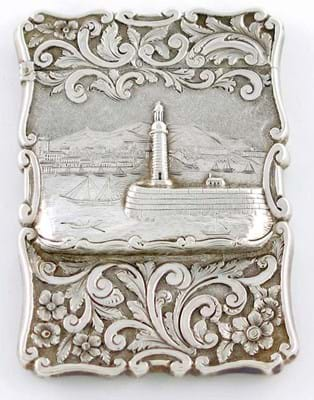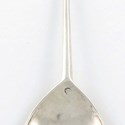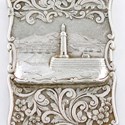Best-seller in the April 25-26 sale was the £36,000 London 1851 centrepiece bought by the Rijksmuseum which was illustrated in ATG No 2291.
Elsewhere it was a case of classic collectors’ items selling solidly – and sometimes extremely well – as 85% of the 1320 lots got away to a hammer total of £832,000.
The earliest offering was a 6in (15cm) long, late medieval diamond-point spoon.
The earliest example of this form with full London marks is believed to date from 1493 but others are known with several versions of the early leopard head mark. This one bears the mark known as the ‘Arabian’ leopard’s head to the fig-shaped bowl. A similar spoon dated to the reign of Henry IV was sold as part of the Benson collection at Christie’s in 2013 for £16,000. This example, estimated at £10,000-15,000, went to a collector at £11,000.
Also going to a collector, a pair of apostle spoons by Daniel Cary, London 1635, featured gilded finials of St Jude and St Matthias with doves to the halos. With scratched initials to the reverse of the bowls, the 7½in (18.5cm) spoons made £11,500 against an estimate of £7000-9000.
One of the sale’s primary sources was the third tranche of the small work collection assembled by estate agent Arthur Holder. Irish views set new records for castle-top card cases in the first of the Holder sales.
This latest offering included a rare castle-top card case by John Schriber, Dublin 1863, depicting Kingstown (now Dun Laoghaire) harbour and lighthouse, a ship in port and hills behind the south Dublin town.
With a cartouche to the reverse showing a viscount’s coronet, it was pitched at £3000-4000 and sold to a private buyer at £8800.


















